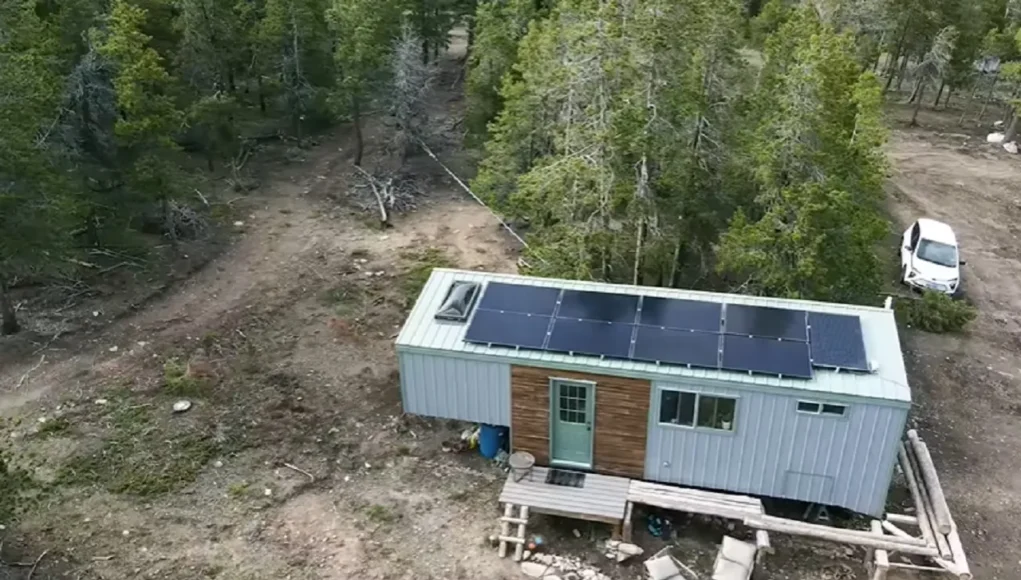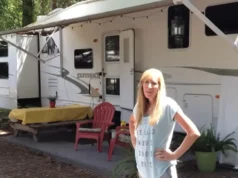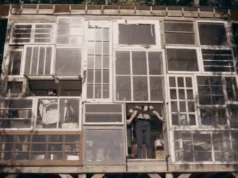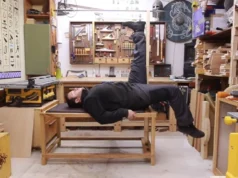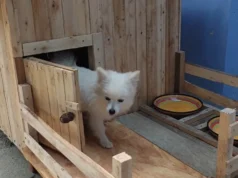Imagine entering a space that effortlessly blends affordability, innovation, and the raw spirit of freedom. This is the story of Tim’s self-built tiny home, a dwelling that challenges the norms of what a home should be. Set against the scenic and peaceful backdrop of Boulder County, Colorado, Tim’s home is not just a place to live—it’s a proof to a way of life, driven by passion, creativity, and a deep desire for simplicity. Crafted from a converted fifth-wheel trailer, his home measures approximately 32 feet long and 8 feet wide, offering an innovative solution for those looking to minimize and reconnect with life’s essentials.
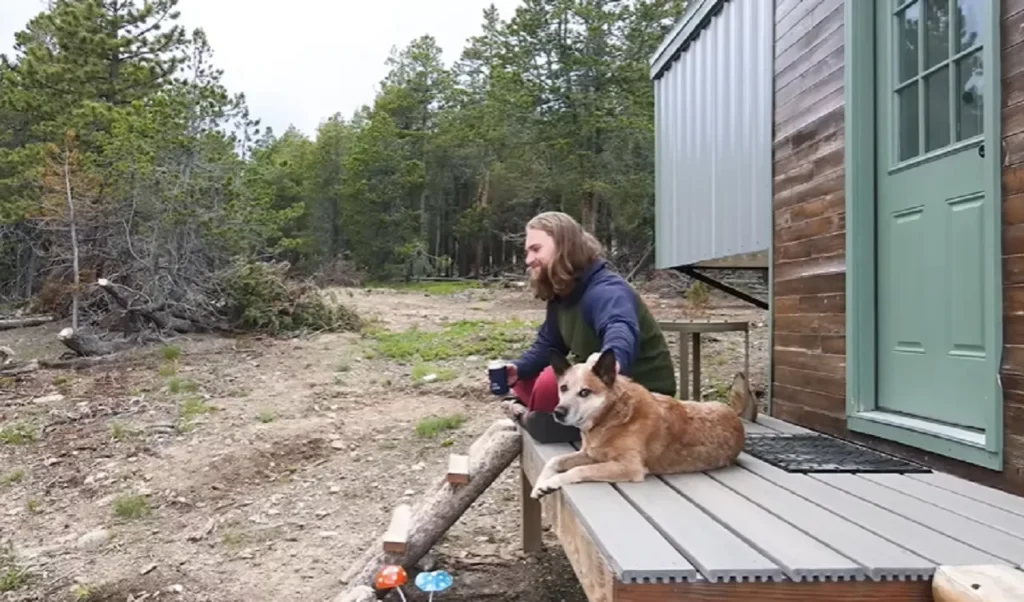
Tim’s Inspiration: A Simpler Life
The motivation behind Tim’s tiny home was not about cutting corners or following the latest trend. For Tim, it was a call to live more meaningfully. Like many others caught in the web of the traditional housing market, Tim had long felt burdened by high rents, mortgages, and the unrelenting push for bigger, better, and more expensive living spaces. But what he really wanted was freedom: freedom from financial stress, clutter, and excess.
Tim’s journey began by asking a simple question: How much space do I really need to live happily? With that in mind, he explored various options, from prefabricated tiny houses to container homes. But in the end, the idea of converting a fifth-wheel trailer into his own custom-designed living space seemed like the perfect middle ground. It was affordable, flexible, and more importantly, allowed him to put his personal stamp on every corner.
The Art of Building on a Budget
One of the key aspects of Tim’s home that stands out is how affordable the project turned out to be. In an era where housing costs are soaring, especially in picturesque places like Boulder County, Tim’s approach is refreshing. By choosing a fifth-wheel trailer as the foundation, Tim avoided the steep costs associated with buying land and building from scratch.
But don’t mistake affordability for lack of quality. Tim didn’t skimp on materials or design. The tiny home features high-quality, locally sourced materials. Inside, the walls are insulated to withstand Colorado’s varying climate, ensuring the home remains warm in the winter and cool in the summer. The windows, strategically placed, allow for natural light to flood the space, creating an open and airy feel despite its size.
Tim used reclaimed wood for much of the interior, giving the home a rustic yet modern charm. Every detail, from the countertops to the custom shelving, was designed with both aesthetics and practicality in mind. The kitchen, though small, is fully functional, with a stove, sink, and even a mini-fridge. The loft-style bedroom, nestled above the main living area, offers a cozy escape at night, while the living room, complete with a couch and small workspace, is perfect for unwinding after a day’s work.
Innovation Meets Sustainability
What sets Tim’s tiny home apart from many other DIY projects is his commitment to sustainability. Tim’s decision to downsize wasn’t just about personal freedom; it was about reducing his environmental footprint. The home is equipped with solar panels that power everything from the lights to the kitchen appliances. By relying on renewable energy, Tim can live off the grid, further enhancing his sense of independence.
In addition to solar energy, Tim installed a rainwater collection system that feeds into his home’s plumbing. Water is filtered and stored, ensuring that Tim has a steady supply without relying on external sources. It’s this innovative combination of sustainable living solutions that truly makes Tim’s home a beacon for those looking to reduce their impact on the environment.
Even the layout of the home was designed with efficiency in mind. Every inch of space serves a purpose, and Tim made sure that nothing was wasted. The storage spaces are hidden in plain sight, with drawers built into the staircase leading up to the loft, and compartments beneath the couch that hold everything from extra bedding to tools.
Living with Less: A New Kind of Freedom
Living in a space that is just over 250 square feet might sound challenging for some, but for Tim, it was the ultimate freedom. His tiny home represents a departure from the pressures of modern life, where bigger is often equated with better. In this small space, Tim has everything he needs—and nothing more. It’s a lifestyle that encourages intentional living, where every item in the home has a purpose and every square foot is used wisely.
The simplicity of the design extends to his daily routine. Without the need to maintain a large home, Tim has more time to pursue the things he loves, like hiking the trails of Boulder County or working on creative projects. He’s no longer tied down by a mortgage or weighed down by unnecessary possessions. Instead, he’s free to live a life that aligns with his values.
For those considering the tiny house lifestyle, Tim’s home serves as an inspiring example of how innovation, affordability, and sustainability can come together to create something extraordinary. It’s not just about building a smaller home; it’s about rethinking how we live and what we truly need to be happy.
The Boulder County Backdrop: Nature at Its Best
Another highlight of Tim’s tiny home is its location. Set against the backdrop of Boulder County, Colorado, Tim wakes up every day to breathtaking views. The stunning natural landscape plays a significant role in his daily life. Whether it’s the towering mountains, the crisp morning air, or the peaceful solitude of living away from the hustle and bustle, the location complements his desire for a simpler, more intentional way of living.
The proximity to nature offers Tim endless opportunities for outdoor adventures, from hiking and biking to simply sitting on his small porch with a cup of coffee, soaking in the beauty around him. In a way, his home is an extension of the natural world, designed to exist in harmony with the environment rather than dominate it.
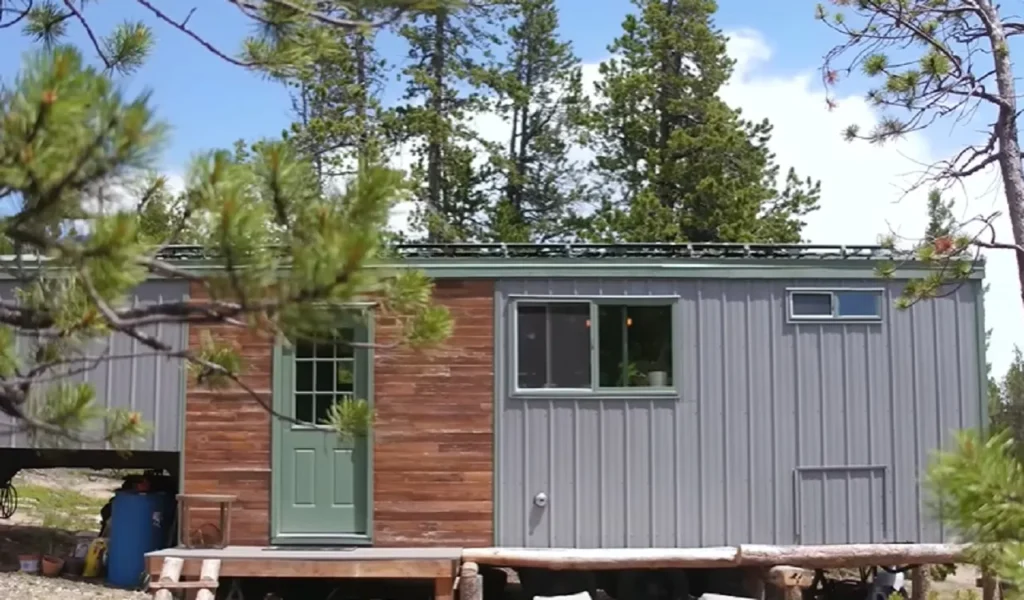
A Vision of the Future
Tim’s tiny home is more than just a personal project; it’s a glimpse into a possible future where more people choose to live smaller, simpler, and more sustainably. As housing prices continue to rise and people seek alternatives to the traditional American dream of sprawling homes and endless material possessions, tiny houses like Tim’s offer a refreshing alternative. With creativity, innovation, and a bit of hard work, it’s clear that anyone can build a home that reflects their values, their needs, and their desire for a life free from the excesses of modern society.


